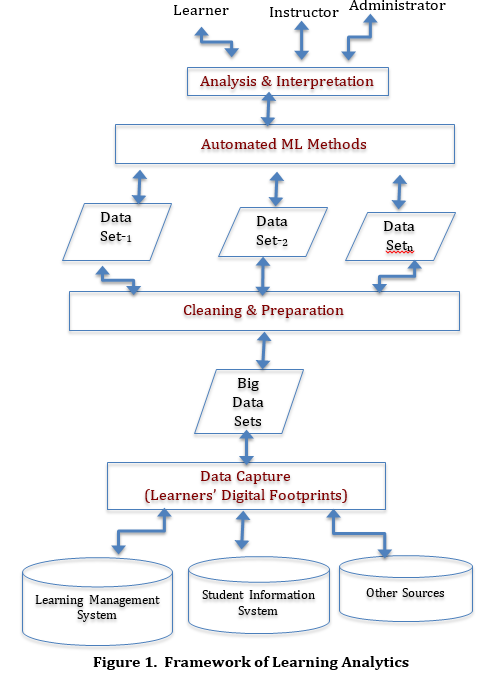
Educational institutions are being called to answer challenging questions related to what students are learning and whether the costs are justifiable.
Hence the demands to analyze large data sets of students' digital footprints, academic performance, retention rates, learning experience, enrollment, employability, would help making strategic decisions to improve student life cycle and reach institutional goals.
Learning analytics (LA) investigates and processes digital footprints that students leave behind while accessing digital platforms including learning management systems (LMSs), intelligent tutoring systems (ITSs), massive open online courses (MOOCs), and educational video games.
LA is the process of collecting big data to improve learning processes. It offers unlimited prospects to be proactive in improving student learning and produce measurable gains in education in general. LA also helps to increase awareness of both students and instructors, allow them to make constructive decisions, conduct their tasks effectively and to personalize educational opportunities to fit individual learner's needs.
LA helps to analyze data from at least four different views:
Figure 1 shows an attempt to clarify the major elements of a LA system.

Collaborative learning is a paradigm where instructors/tutors and students collaborate in peer-to-peer or groups in coworking spaces.
Cornell University Center for Teaching Excellence reported that conducting effective collaborated activities could lead to better self-esteem, higher-order thinking, and leadership skills.
For more details, please contact me here.